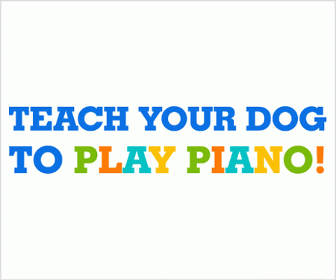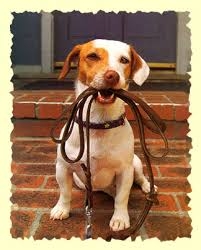Dogs and Leashes: Always Togethr?


We have been accustomed to establishing a relationship between dogs and leashes most of our lives as dog owners. It seems we have always been taught that dogs have to be trained using leashes and that these are a must when walking our dogs.
Although the truth is that leashes are one, if not the most important means of control we have when we are away from home with our dogs, there are certainly other ways we can use to teach our dogs to walk beside us without having to be attached to a leash.
Of course, if you have started teaching your dog to walk beside you from the moment you started walking her, the results will be almost automatic, although it is important to always keep in mind that dogs are very curious creatures. That means that her attention may be caught by any kind of stimulus you may not even notice and… there she goes!
For best results, even though the main purpose is to train her to walk without a leash, it is always recommended that you start by using one that will help you better achieve your goal.
There are innumerable types of leashes out there and I have noticed many more coming out frequently. It has been pointed out that the best type of leash to use in order to train your dog would be a flat, smooth 6 ft. training leash that attaches to a flat, buckle collar.
It is well known that treats are the easiest way to grab a dog’s attention and therefore, are the most commonly used means of training a dog, just like any other animal which can be trained. So, in order to start the training, you should always be equipped with the kind of treat your dog loves the best, preferably small ones that you can carry around.
If you want your dog to follow your command, the relationship between her watching you and knowing what to do usually starts by your showing her to follow your face, your voice when you call her name and especially your eyes. This is only for focusing purposes. There are simple exercises you can follow in order to establish that relationship, usually directing the treat to your face and eyes after you have let her smell the treat. This will produce the dog to follow the treat and finally focusing on your face. You can then give the order you want, be that a “watch me”, “yes”, “good dog” or any other sound or gesture you like that conveys to the dog, as you reinforce what she has done by following the treat to your eyes with the treat itself. This has to be repeated until you see that the simple command is enough for your dog to understand what you want her to do. There may times when a change of the treat is necessary for the dog not to get tired of the reward, although if done properly, this stage does not have to last for a long time.
Always start with the command to sit, preferably on your left side. The same type of rewarding may be used to establish the connection of the word with what you want. Do not skip this step. Also remember that training of a dog has to be accompanied always by the owner being in a very calm state, so the dog enjoys the learning process instead of suffering it. Patience has to be a necessary virtue here. Once the connection between the command “sit’ is established, you may then proceed to walk and stop by using it, so your dog learns to relate the word with the posture you expect her to keep instantly. During this time, the treat may be still necessary. What you want the dog to learn is to sit the minute you stop walking without your having to give the command. The same applies to the “heel” command. This is, when finally taught, what will give you the signal that going of the leash is possible with your dog.
Repetition is the key here. You must never assume that because she performed well two or three times, the goal is achieved. You have to be completely sure that she can follow the direction you give every single time until the treat is not necessary and the association had been made.
Something else that is extremely important for you not to forget is to never reward the dog; that is, never give her the treat if she does not follow what you want her to do. If you do, the association will change course and she will not be able to establish what you want with certainty. It is the same as if you give your child a present when he or she misbehaves. You would not do that, right?
If you have a place where you go with your dog to walk, like a dog park or beach, take her there on the leash and walk her for a while on it while giving the commands you want, all these accompanied always with her name. If she performs flawlessly, take the leash off and continue giving the commands, watching her. Remember it is very important you do not allow her to leave your side without a leash unless you are completely sure she will come back and stay by your side if requested to do so. Repetition until the correct association has been established without the need to give her a treat is necessary. Later on, a simple verbal praise or a caress will substitute the treat as a reward.
As seen, even though the road to get to your dog walking with you without a leash starts with one, the importance is really what you, as a dog owner, do with following the steps and not get tired on the way. It is simply a learning process and it will require time and patience on your part, but at the end, you and your dog will enjoy the freedom of walking without the leash. Even though it may sound contradictory to what I just said, keeping a leash at hand in case of emergencies is always recommended. Remember you two are not the only ones walking or trying to enjoy a particular area, and you will never be able to know what the other dogs around may do, since you do not know how well they are trained. At least yours will be and that means control will be simpler.
